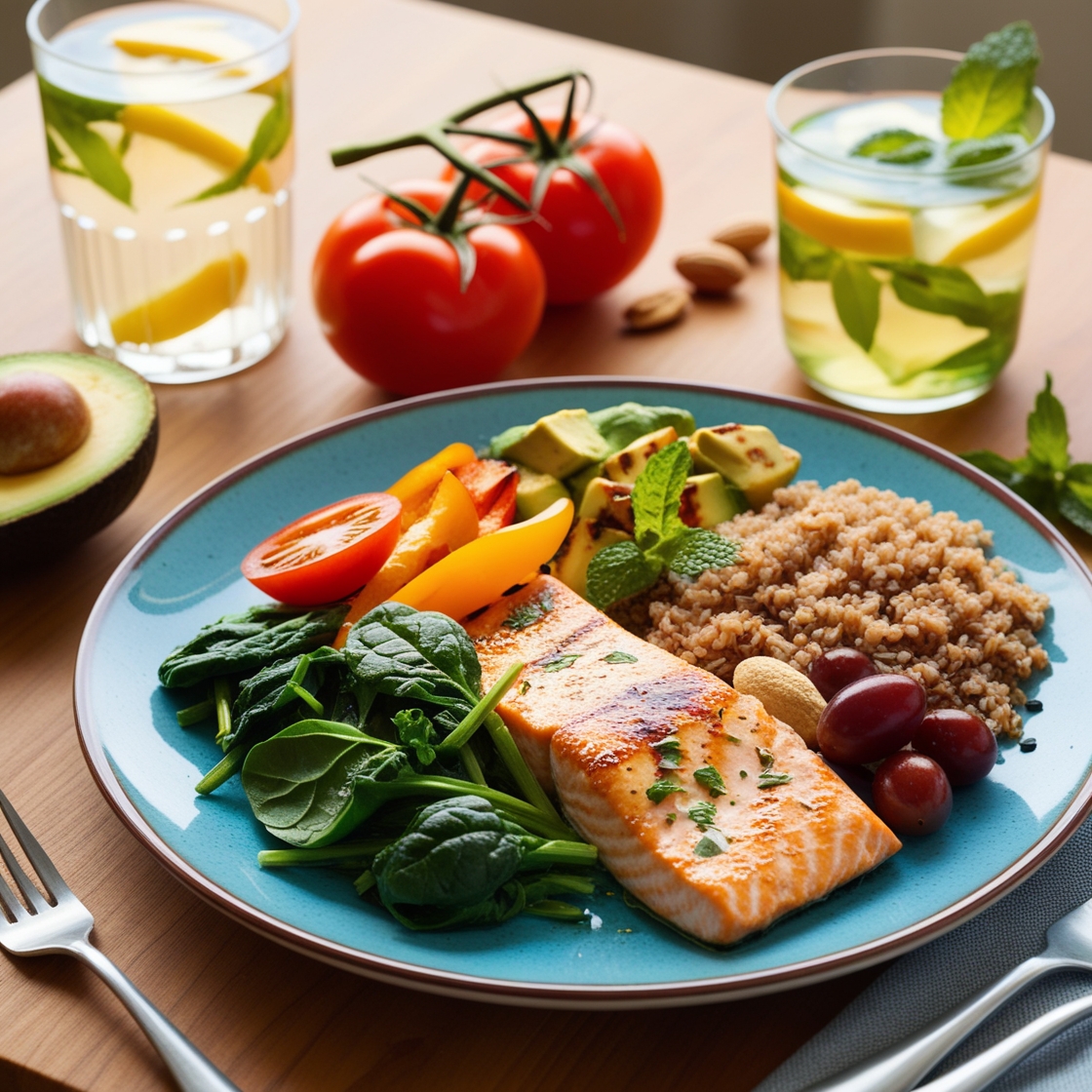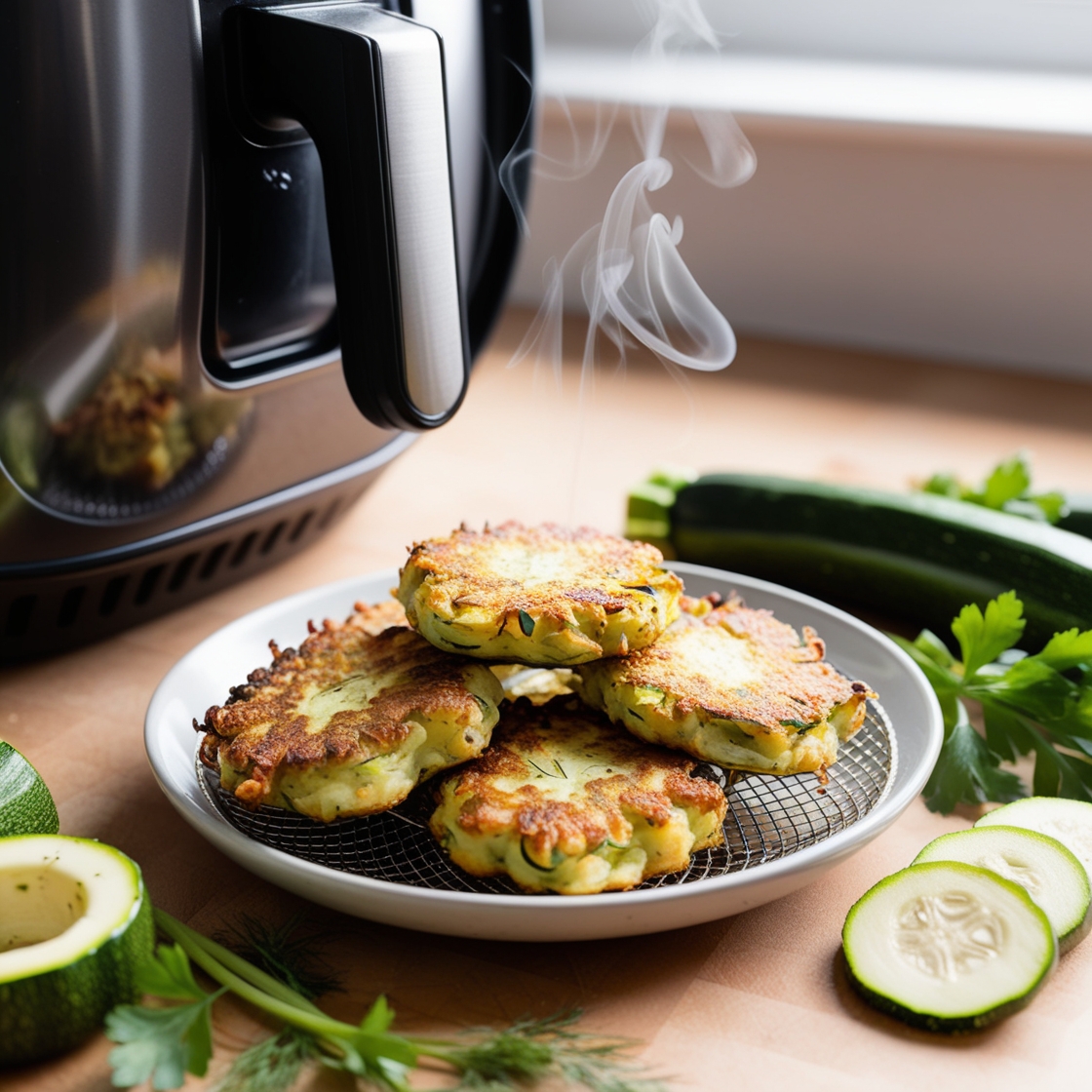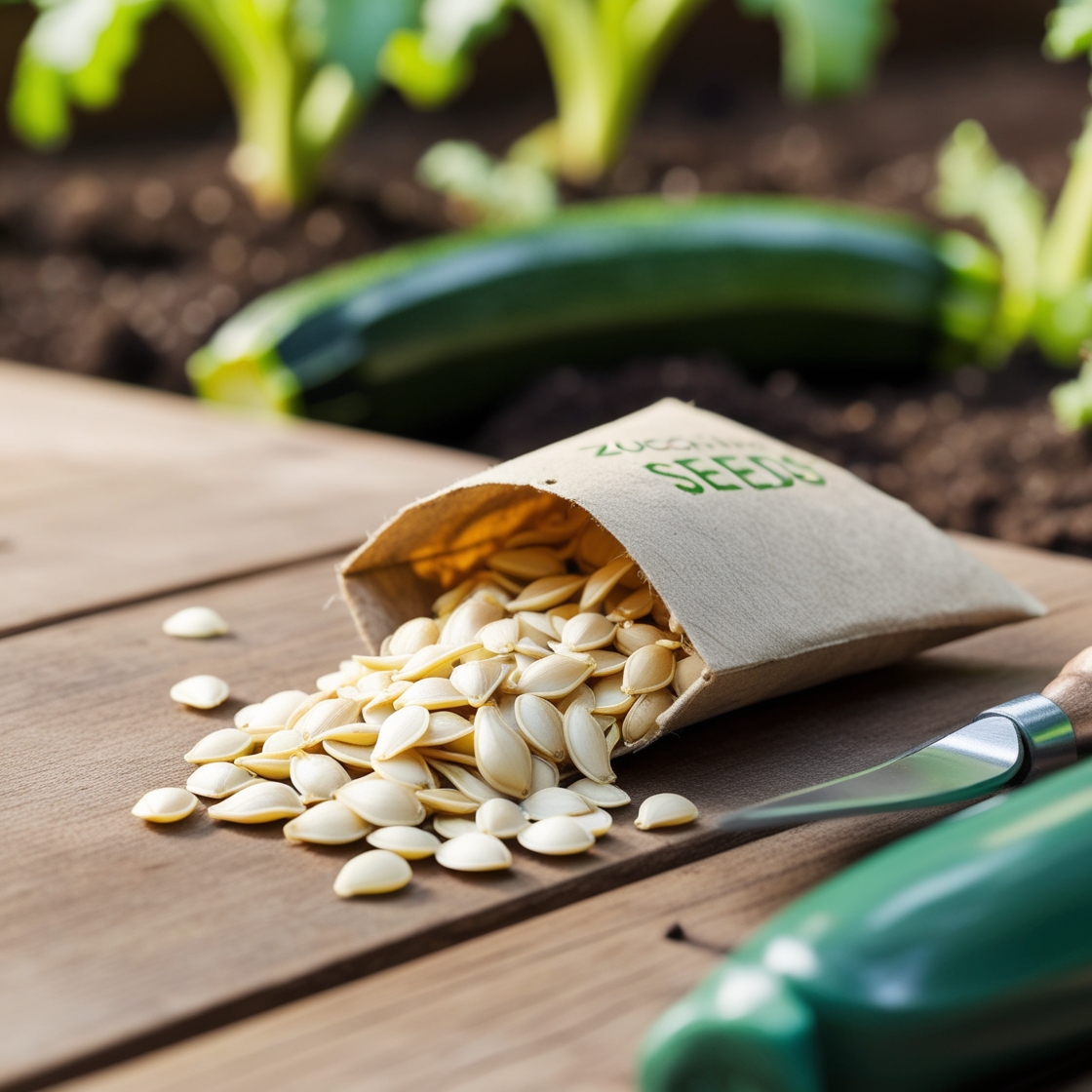Growing up, I had an insatiable love for chocolate. While living in the UK, I couldn’t resist the allure of a Cadbury shop, and my sweet tooth dictated many of my food choices. Dark chocolate was far too bitter for my taste. One of my fondest memories is from 2005 at Buckingham Palace, where I indulged in the most heavenly cupcakes, handcrafted by the royal pastry chefs.
But as the years passed and I moved to Canada in 2007, I started noticing subtle but concerning changes. The sugar highs that once brought me so much joy were now followed by energy crashes, dizziness, and fatigue. These were my body’s warning signs, urging me to rethink my diet.
Over time, I began transitioning away from processed sugars. Today, I appreciate the complexity of dark chocolate, I drink my coffee unsweetened, and I use natural sweeteners like date paste. This shift in my diet led me to study nutrition, diabetes, and the profound impact food has on health. It also deepened my interest in creating a Diabetes Meal Guide that focuses on whole, nutrient-dense ingredients to help manage blood sugar effectively.
This guide combines scientific insights, practical meal planning, and personal experience to help those managing diabetes develop sustainable eating habits. If your goal is to stabilize blood sugar levels, reduce sugar cravings, or simply adopt a healthier diet, the Diabetes Meal Guide provides actionable strategies and recipes tailored for balanced nutrition.

Understanding Diabetes and Nutrition
How Food Affects Blood Sugar
The American Diabetes Association emphasizes that diet plays a crucial role in blood sugar control, weight management, and long-term health outcomes for people with diabetes. Every food we eat influences glucose levels, insulin response, and metabolic functions.
The Role of Macronutrients in Diabetes
- Carbohydrates are the body’s primary source of energy but have the most significant impact on blood sugar. Some carbohydrates, like refined sugars and white flour, cause rapid spikes, while complex carbs from whole grains, legumes, and vegetables release energy more slowly.
- Proteins and Fats help slow down carbohydrate absorption, keeping blood sugar stable. Lean proteins like fish, poultry, tofu, and beans promote satiety, while healthy fats from olive oil, nuts, and avocados support heart health.
- Fiber plays a vital role in managing diabetes by reducing blood sugar spikes and improving gut health. Non-starchy vegetables, whole grains, and legumes are excellent sources of fiber.
By understanding the effects of different macronutrients, you can build a balanced meal plan that helps regulate blood sugar without feeling deprived.
The Best Dietary Approaches for Diabetes Management
Not every diet works the same way for everyone. Research highlights several meal patterns that support diabetes management. Through my own journey, I’ve explored different dietary approaches, and the Diabetes Meal Guide has helped me identify the most effective strategies for maintaining balanced blood sugar levels. Here’s what I found most effective:
The Mediterranean Diet
After spending three months adopting this lifestyle, I fell in love with its balance. The Mediterranean diet prioritizes:
- Healthy fats (olive oil, nuts, seeds)
- Lean proteins (fish, poultry, legumes)
- Whole grains
- Plenty of vegetables and fruits
With healthy eating, it is also important to be able to cut food properly and effortlessly. You can use the Misen Chef Knife! The Misen Chef Knife will revolutionize your vegetable cutting experience.

Misen Chef Knife
- VERSATILE JAPANESE CULINARY KNIFE
- PREMIUM JAPANESE STEEL
- THOUGHTFUL DESIGN FOR PRECISION
- UNMATCHED VALUE AND QUALITY
Studies show that the Mediterranean diet reduces inflammation, stabilizes blood sugar levels, and lowers the risk of heart disease.
The DASH Diet (Dietary Approaches to Stop Hypertension)
The DASH diet is designed to lower blood pressure but also benefits people with diabetes. It includes:
- High-fiber foods (vegetables, fruits, whole grains)
- Low-fat dairy
- Lean proteins
- Reduced sodium intake
This diet focuses on balanced meals that prevent insulin resistance while supporting heart health.
A Whole-Food Plant-Based Diet
During a six-week experiment, I eliminated processed foods and animal products, focusing on:
- Legumes, beans, and lentils
- Whole grains
- Nuts, seeds, and healthy fats
- A variety of colorful vegetables
A plant-based diet is rich in fiber and antioxidants, which help improve insulin sensitivity and reduce inflammation.
Each of these diets has unique benefits, but the key takeaway is balance and sustainability. The goal isn’t restriction—it’s making mindful choices that nourish your body and keep blood sugar stable.
After discussing the importance of mindful eating and sustainable habits for managing diabetes, it’s great to still be able to enjoy a treat, guilt-free. For a guilt-free experience that allows you to explore your creative freedom, I recommend the Ninja CREAMi Deluxe 11-in-1 Ice Cream and Frozen Treat Maker. With this, you can create delicious, customized desserts at home using healthier ingredients and natural sweeteners like date paste, putting you in control of the sugar content. I love making sugar-free sorbet.

Ninja CREAMi Deluxe 11-in-1 Ice Cream and Frozen Treat Maker
- ADDED PROGRAMS: Unlock a variety of CREAMi frozen treats with 5 new programs.
- XL CAPACITY: Family-sized treats for everyone to enjoy. New 24 oz. CREAMi XL Tubs hold 50% more ice cream than the original Ninja CREAMi.
- DUAL PROCESSING: Use the same base to make two separate mix-in flavors—add candy to the top portion and serve first, then add cookies to the bottom and enjoy later for even more customizable treats.
- CUSTOMIZATION: With the Ninja CREAMi Deluxe, you can have total control of your ingredients for low sugar, protein-packed, dairy-free, and vegan options. Add in your favorite chocolate, nuts, candy, fruit, and more to personalize any CREAMi treat.
Diabetes Meal Planning: The Diabetes Plate Method
A simple yet effective tool for portion control is the Diabetes Plate Method:
- Fill half your plate with non-starchy vegetables (broccoli, spinach, peppers, zucchini).
- One-quarter with lean protein (fish, poultry, tofu, eggs).
- One-quarter with quality carbohydrates (quinoa, sweet potatoes, legumes).
Using this method makes it easier to create balanced meals without measuring everything. Research confirms that this approach stabilizes blood sugar, promotes weight management, and reduces the risk of diabetes complications.
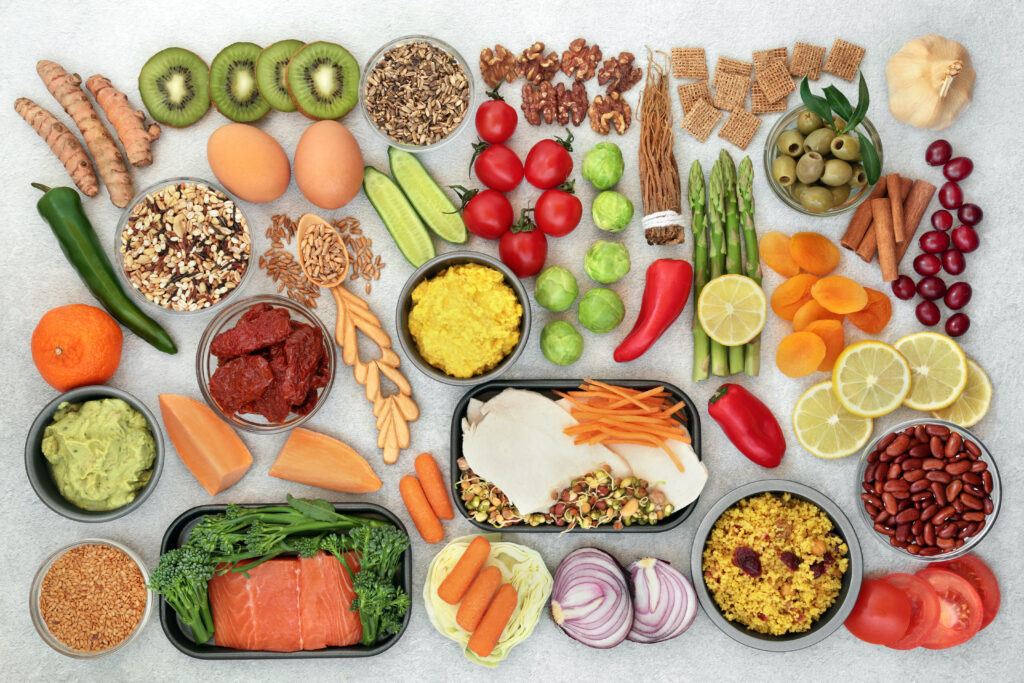
Nourishing Recipes for Balanced Blood Sugar
Herb-Crusted Baked Cod with Cauliflower Rice
A light yet satisfying meal with protein, fiber, and healthy fats.
Ingredients:
- 4 fresh cod fillets (6 oz each)
- 1 large head of cauliflower, riced
- 3 tablespoons fresh herbs (dill, parsley, thyme)
- 2 tablespoons olive oil
- 2 cloves garlic, minced
- 1 lemon, zested and juiced
- 1/4 cup almond flour
- Salt and pepper to taste
Instructions:
- Preheat the oven to 375°F (190°C).
- Pulse cauliflower in a food processor until rice-sized.
- Mix herbs, almond flour, and lemon zest for the crust.
- Coat fish with olive oil and herb mixture.
- Bake for 12-15 minutes until flaky.
- Sauté cauliflower rice with garlic and serve.
Nutrition Per Serving:
Calories: 320 | Carbs: 8g | Protein: 35g | Fat: 12g | Fiber: 4g
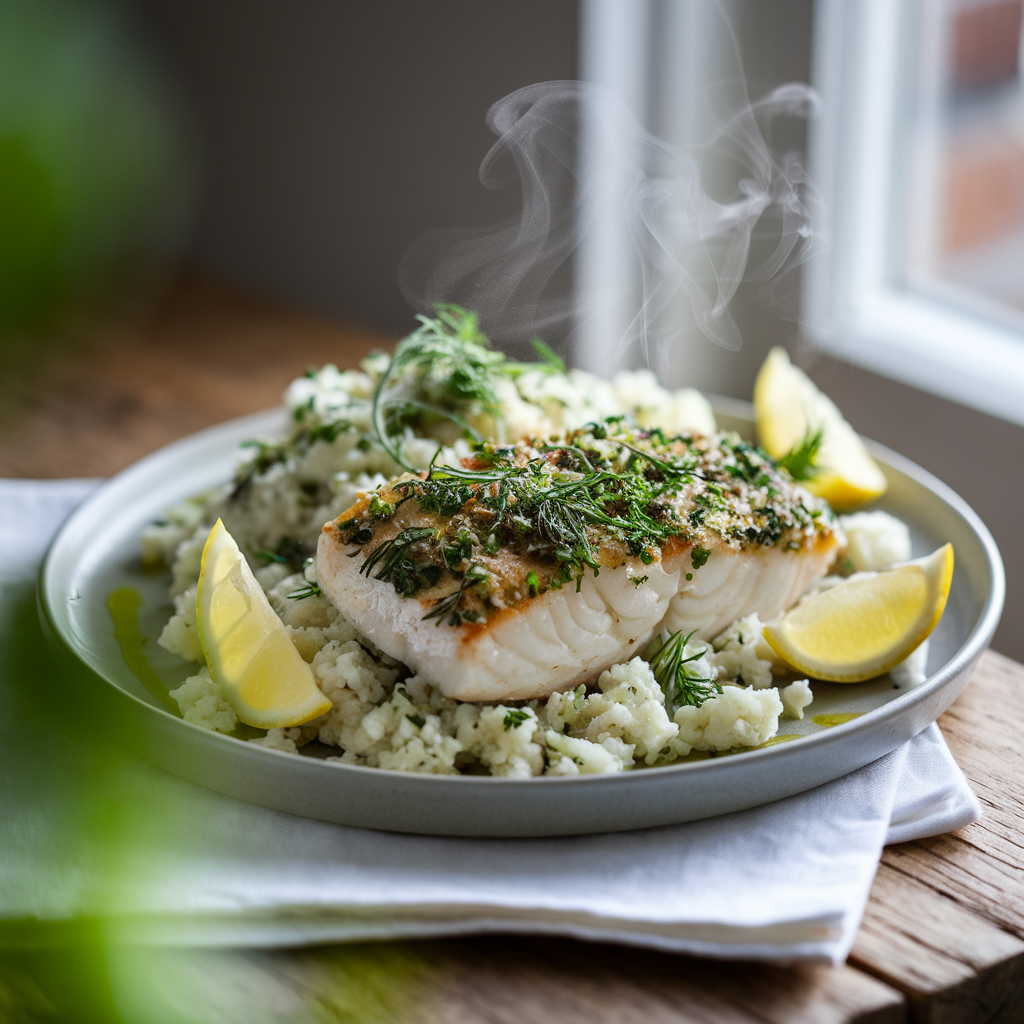
Asian-Inspired Salmon with Ginger-Garlic Greens
Rich in omega-3s, this dish supports heart health and stabilizes blood sugar.
Ingredients:
- 4 wild-caught salmon fillets (4 oz each)
- 2 cups baby bok choy
- 2 cups spinach
- 2 tablespoons grated ginger
- 3 cloves garlic, minced
- 2 tablespoons coconut aminos (soy sauce alternative)
- 1 tablespoon sesame oil
- Sesame seeds for garnish
Instructions:
- Marinate salmon in coconut aminos and ginger for 30 minutes.
- Bake at 375°F for 12-15 minutes.
- Sauté greens with garlic and remaining ginger.
- Serve salmon over greens and drizzle with sesame oil.
Nutrition Per Serving:
Calories: 380 | Carbs: 5g | Protein: 40g | Fat: 20g | Fiber: 2g
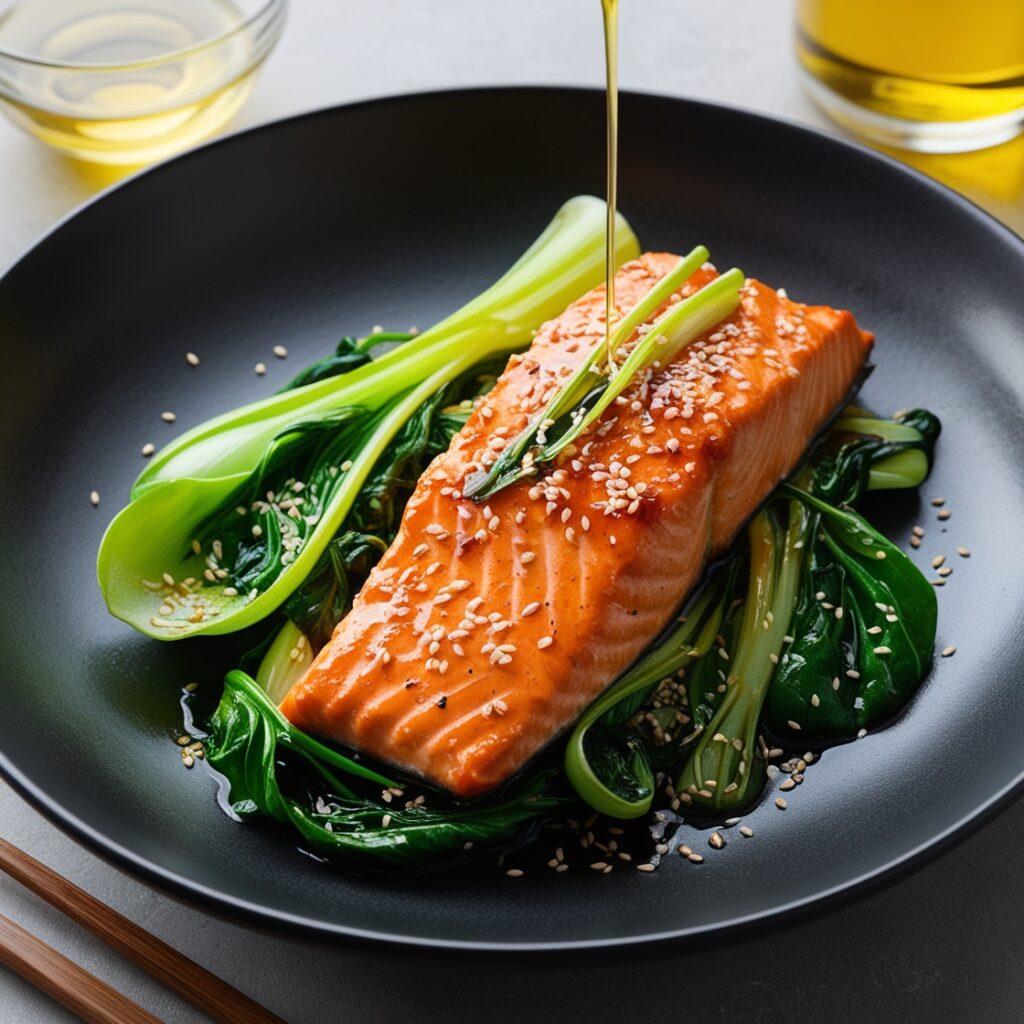
Breakfast Chia Pudding with Berry Compote
A fiber-packed, low-glycemic breakfast that keeps you full.
Ingredients:
- 1/4 cup chia seeds
- 1 cup unsweetened almond milk
- 1 cup mixed berries
- 1 tablespoon vanilla extract
- 1/4 teaspoon cinnamon
- 2 tablespoons chopped nuts
Instructions:
- Mix chia seeds with almond milk and vanilla.
- Refrigerate overnight.
- Cook berries over low heat until soft.
- Layer pudding with berries and nuts.
Nutrition Per Serving:
Calories: 250 | Carbs: 15g | Protein: 8g | Fat: 12g | Fiber: 7g
For those looking to take their commitment to balanced nutrition a step further and fully embrace a whole-food approach, I recommend the Vitamix A3500 Ascent Series Smart Blender. This high-performance blender can effortlessly create smoothies, soups, and other dishes using whole, nutrient-dense ingredients, making it an invaluable tool for diabetes meal planning.

Vitamix A3500 Ascent Series Smart Blender
- Program Settings: Five program settings ensure walk-away convenience and consistent results
- Container Capacity: 48-Ounce Container is ideal for small to medium-sized blends
- You’re in Control: Variable Speed Control and Pulse feature let you manually fine-tune the texture of any recipe
- Built-In Wireless Connectivity: The motor base can detect the container size and automatically adjust program settings and maximum blending times accordingly. Add a range of compatible containers and attachments, building a customized system designed to fit your needs
Real-Life Success Stories: How Diet Transformed Lives
Many individuals have successfully managed their diabetes through dietary and lifestyle changes. Here are a few inspiring examples:
Larry King
Famed television host Larry King was diagnosed with type 2 diabetes later in life. By adopting a more mindful approach to his diet and prioritizing exercise, he was able to manage his blood sugar levels more effectively. King emphasized portion control and reduced processed sugar intake, allowing him to maintain better overall health in his later years.
Jessica Chastain
Actress Jessica Chastain follows a plant-based diet, which is known for its benefits in managing blood sugar and overall health. While she does not have diabetes, her commitment to consuming fiber-rich vegetables, whole grains, and lean plant-based proteins has inspired many to adopt similar diets for blood sugar regulation and general well-being.
Tom Hanks
Oscar-winning actor Tom Hanks was diagnosed with type 2 diabetes in 2013. He attributed his condition to years of poor diet choices and fluctuating weight. Since his diagnosis, Hanks has taken steps to maintain a balanced diet and regulate his blood sugar through portion control, healthy fats, and exercise. His journey highlights the importance of consistent dietary choices in managing diabetes effectively.
Vanessa Williams
Singer and actress Vanessa Williams has been open about her commitment to maintaining a healthy diet. She was diagnosed with type 1 diabetes and has since taken proactive steps to manage the condition through mindful eating and lifestyle adjustments. As someone managing diabetes, she follows a diet rich in whole foods, lean proteins, and fiber, which is beneficial for blood sugar control and overall wellness. Her approach demonstrates how a mindful and nutritious diet can prevent chronic conditions and promote longevity.
These stories demonstrate that while managing diabetes requires commitment, the right dietary and lifestyle changes—like those outlined in the Diabetes Meal Guide—can lead to incredible health improvements.
Supporting Loved Ones in Their Health and Nutrition
As I continue my efforts toward mindful eating and balanced nutrition, I also remind my dad and stepmom to watch their diet and be conscious of their sugar intake.
Thankfully, my dad, at 84, and my stepmom, at 80, have always been mindful of their health, making informed choices about their meals. They remain active, continue to travel, and maintain a vibrant lifestyle.
Seeing them prioritize their well-being reinforces the importance of a balanced diet, not just for managing blood sugar but for sustaining overall health and longevity.
It’s a powerful reminder that making intentional food choices today can profoundly impact our quality of life in the years to come.

Final Thoughts
Throughout this guide, we’ve explored the impact of food choices on blood sugar control and overall health. We discussed how different diets, such as the Mediterranean, DASH, and Plant-Based diets, can support diabetes management while offering delicious and sustainable meal options.
The Diabetes Plate Method simplifies portion control, making meal planning easier, while nutrient-dense recipes provide practical ways to enjoy flavorful, balanced meals. We’ve also highlighted the importance of fiber, healthy fats, and lean proteins in maintaining steady energy levels and preventing blood sugar spikes. By understanding how different foods affect glucose levels, you can take proactive steps toward better health without feeling restricted.
At its core, this article is about empowerment through knowledge and conscious decision-making. Managing diabetes doesn’t mean sacrificing the joy of eating—it means redefining your relationship with food. It’s about making choices that nourish your body while still allowing you to enjoy the flavors and traditions you love.
Small, consistent changes lead to long-term success, and the path to better health is one of self-discovery and adaptability. If you’re looking for a practical way to maintain a balanced diet, the Diabetes Meal Guide provides actionable strategies to help you feel your best. Food is powerful medicine—when used wisely, it has the potential to transform not just your physical health but your overall well-being for years to come.
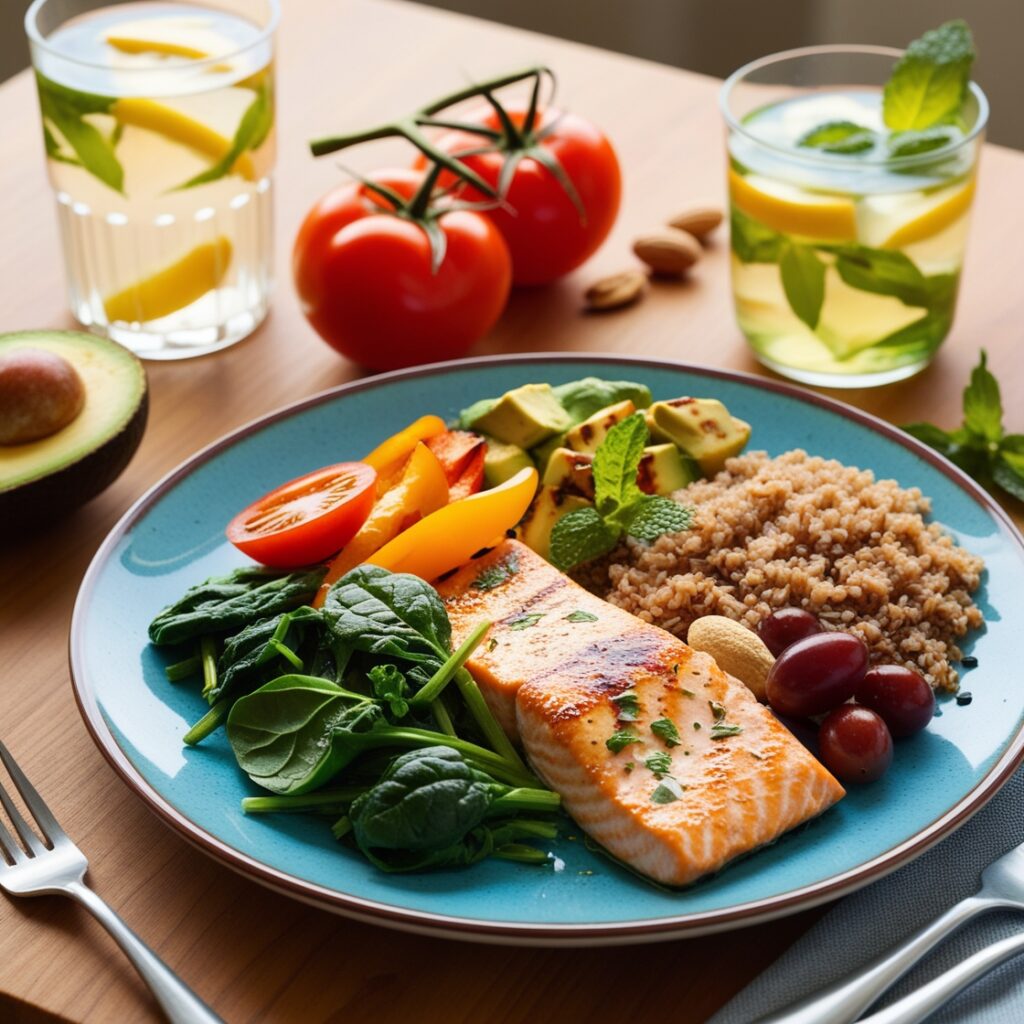
*We may earn a commission for purchases made using our links. Please see our disclosure to learn more.

